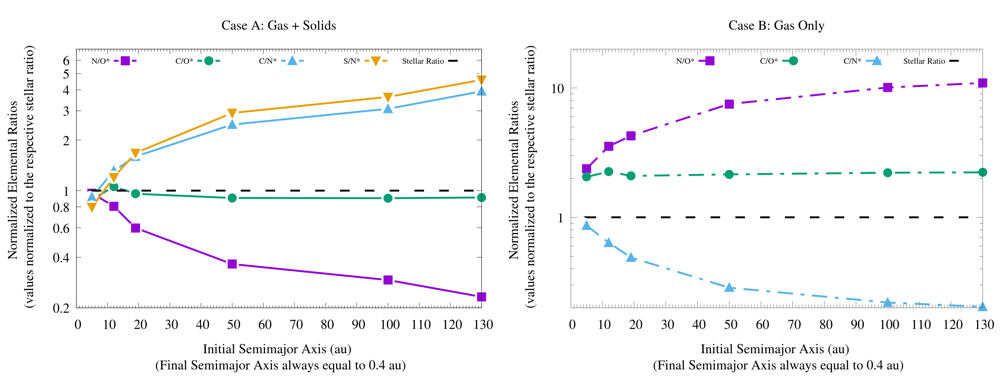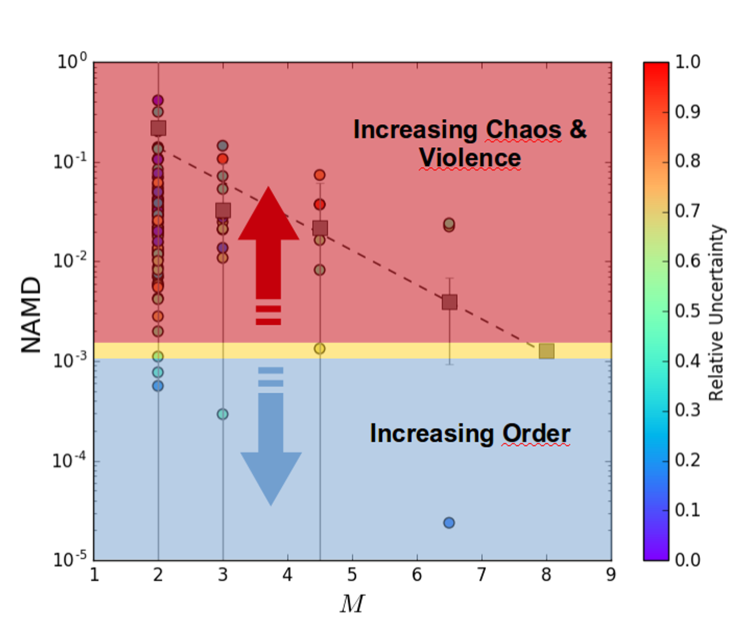By Diego Turrini
An ever increasing number of extrasolar planets is being spectroscopically characterized to determine their atmospheric compositions and, from them, shed light on their formation histories and environments. The upcoming launch of the James Webb Space Telescope and, a few years later, that of the ESA space mission Ariel will allow to greatly increase both the number of characterized planets and the level of detail of their characterization.
It is no simple task, however, to derive unequivocal information from such spectroscopic data.
On the one hand, the planet formation process takes place on the stage set by the star formation process and the link between the two is still plagued by a number of unclear aspects. On the other hand, the very life of planetary systems can alter or even cancel some of their primordial compositional features, hindering such kind of studies.
In this new work, born in the framework of the Ariel mission and counting among its authors researchers from four INAF institutes, we systematically discuss the different environmental factors that, from the galactic scale down to the stellar and planetary scales, contribute to shaping the characteristics of planets and we show how their effects can be identified and constrained thanks to new generations of metrics to compositionally and orbitally characterize planets.
Read the paper led by Diego Turrini (INAF-OATo) in Experimental Astronomy

The figure shows the comparison of the abundance ratios of four elements (carbon, oxygen, sulfur and nitrogen) in giant planets formed solely from the gas of the circumstellar disk (right plot) and from the joint accretion of gas, dust and planetesimals (left plot), illustrating how their comparison (e.g. N/O > C/N or vice versa) allows to constrain the formation scenario of the planet. Such direct comparison is made possible by the use of elemental abundances normalized to the respective stellar values, which also allows to compare planets born around different stars. Credits: D. Turrini & others. Experimental Astronomy, 2021

The figure shows the comparison of the dynamical excitation of known multi-planet systems (parametrized by the NAMD, the normalized angular momentum deficit) as a function of the number of planets they host (the planetary multiplicity M). The greater the dynamical excitation with respect to the value of the Solar System (the region highlighted in yellow), the higher the probability that catastrophic events like giant impacts altered the composition of the planets. Credits: D. Turrini et al., Experimental Astronomy, 2021
